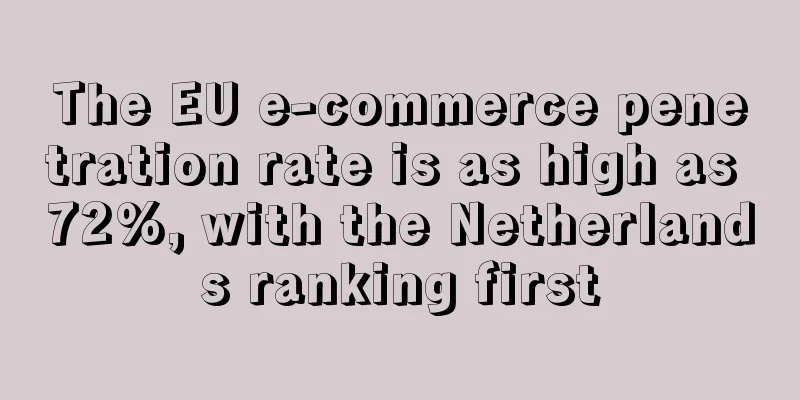The EU e-commerce penetration rate is as high as 72%, with the Netherlands ranking first

|
It is reported that recently, a survey conducted by Eurostat in the last 12 months showed that the e-commerce penetration rate in the EU , that is, the average proportion of Internet users who shop online, reached 72% , among which the Netherlands ranked first in Europe.
The European Statistical Office pointed out that with the invasion of the new coronavirus in Europe, consumption habits and preferences across Europe have undergone major changes, and online shopping has gradually become the first choice of Europeans, and online shopping has continued to grow. Driven by the strong impact of the epidemic, e-commerce has ushered in a golden period, and online shopping has exploded. In the 12 months of 2020, a staggering 89% of people aged 16 to 74 in the EU used the internet, with 72% buying or ordering goods or services online for private use . This is an increase of 4 percentage points compared to 68% of internet users in 2019 and 10 percentage points compared to 62 % in 2015 .
Among many countries in the EU, the Netherlands had the highest e-commerce penetration rate in the EU last year, with 91% of Internet users having purchased or ordered goods or services through the Internet in the region .
Denmark ranked second, reaching 90% , followed by Germany at 87% , Sweden at 86% , and Ireland at 81% . Hungary 's e-commerce penetration rate is about 70% . These countries all had relatively good e-commerce development last year, and e-commerce sales have increased significantly.
On the other hand, the proportion of online shoppers in Bulgaria ( 42%) , Romania ( 45%) and Italy (49 % ) is less than 50% , and the development of e-commerce needs to be improved .
In the past five years, the countries with the largest increase in the proportion of online shoppers among Internet users are Romania , which increased by 27 percentage points; the Czech Republic and Croatia increased by 25 %; and Hungary increased by 23 % . It can be seen that the e-commerce development in these four countries has great potential, and they are catching up with other European countries at a very fast pace.
In general, the e-commerce penetration rate in the EU is very high, e-commerce is developing very rapidly, the number of online shoppers in various countries has increased significantly, and the country is in a leading position in the world. European Union E-commerce Netherlands |
<<: Fashion retailer C&A enters German e-commerce platform Zalando
>>: The American moving wave is coming, and peripheral products will sell well!
Recommend
What is Tomoson
Tomoson is a platform that connects influencers a...
Market report: There are violations in these two major e-commerce platforms in Southeast Asia!
The reports also identify e-commerce platforms an...
Big news! Shopee opens Brazilian site, locals love Chinese products
Join Shopee Brazil and enjoy 3 months of commissi...
Amazon plans to enter South Africa as Generation Z drives online shopping boom
At present, e-commerce giant Amazon does plan to ...
Sales increased by 120%! UK beauty category remains strong
The latest data from the UK's online retail a...
AliExpress Russia launches new version of APP: it has been in trial operation for one year, and sellers do not need to do anything extra
Today, many AliExpress merchants received inquiri...
What is ShopUp? ShopUp Review, Features
ShopUp is Bangladesh's leading full-stack B2B ...
What is Toby.com? Toby.com Review, Features
Toby.com is the only professional media website i...
Several lawyers sued Amazon for defamation
Since the end of March, many Amazon sellers have ...
Temu has issued a new policy, sellers: Sooner or later, they will be squeezed out
In the spirit of not being able to defeat those s...
What is Ostrich Spanish Barn? Ostrich Spanish Barn Review, Features
Ostrich Spanish Warehouse is the first Spanish ove...
What is Meiheng Supply Chain? Meiheng Supply Chain Review, Features
Meiheng Supply Chain (Zhejiang Meiheng Supply Chai...
What is 4SELLERS? 4SELLERS Review, Features
Founded in 1999, 4SELLERS is an integrated system ...
Purchasing power declines, European e-commerce shrinks 13% in the first quarter
According to foreign media reports, global e-comm...
The operation was not in compliance with regulations, and the parent company lost 1.5 billion due to the huge sales.
Nearly 400 sites were blocked, resulting in a los...









